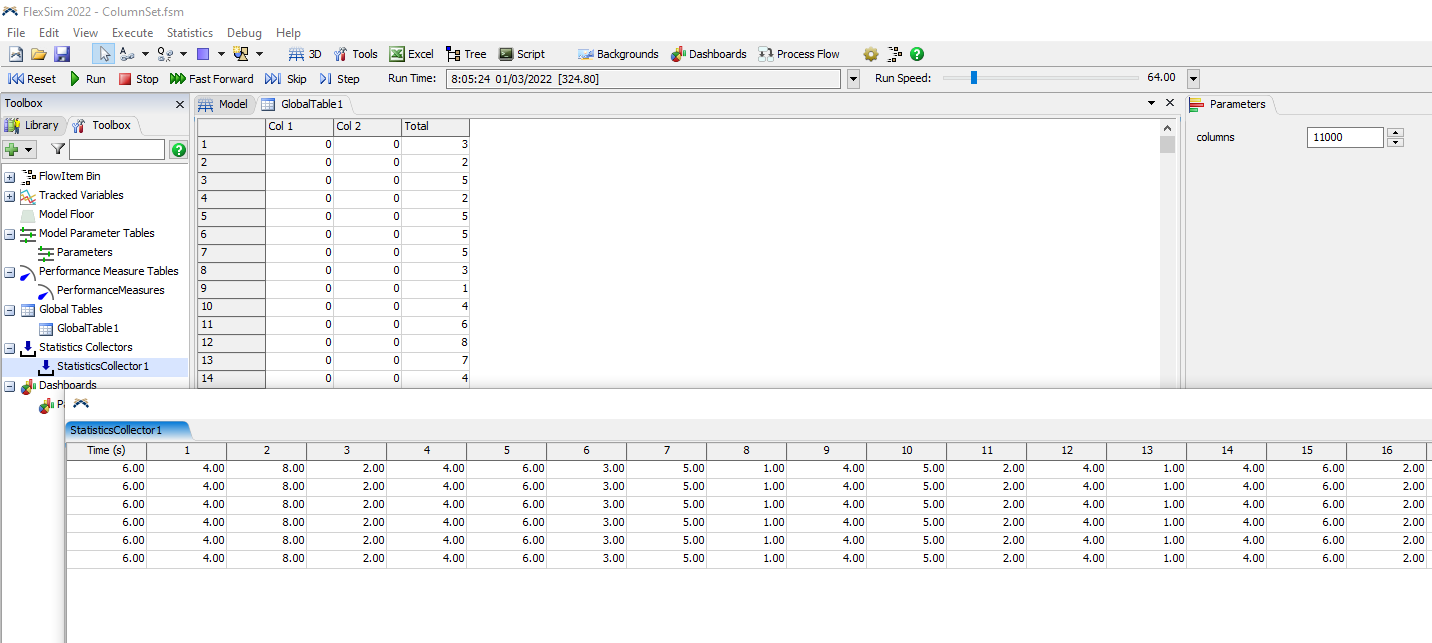Hi, I have a question about the Column Set of the statistics collector.The main problem is that when I increase the range of the columns to set in the statistics, it doesn't work as it should, the values I want to record from the "Total" column of the GlobalTable1 are not the correct ones. Is there a limit of columns to add for the Column Set? I have made a small model where you can see the differences by simply changing the range of columns in the "columns" parameter.


Thank you in advance!

